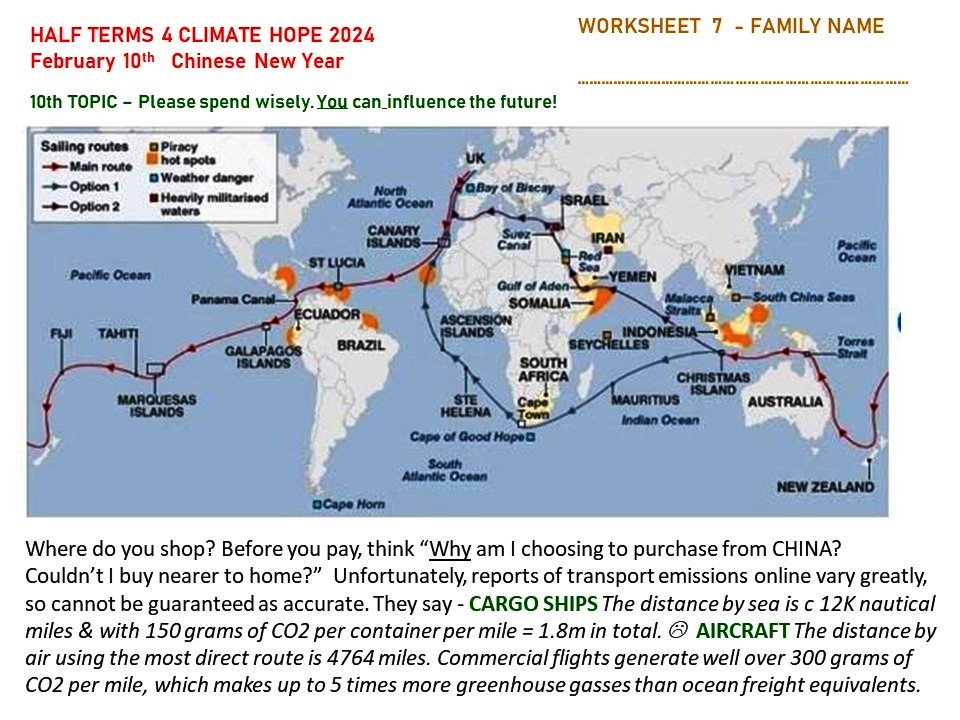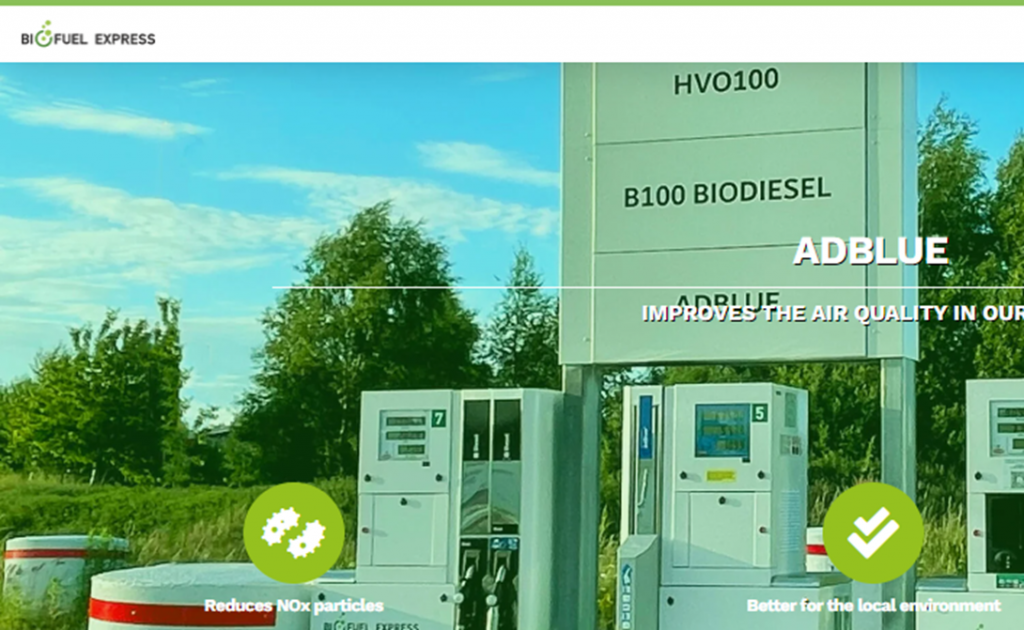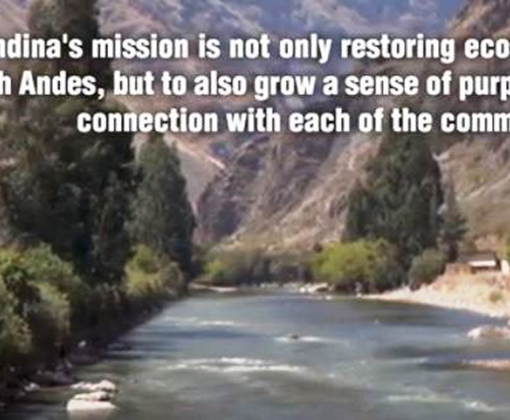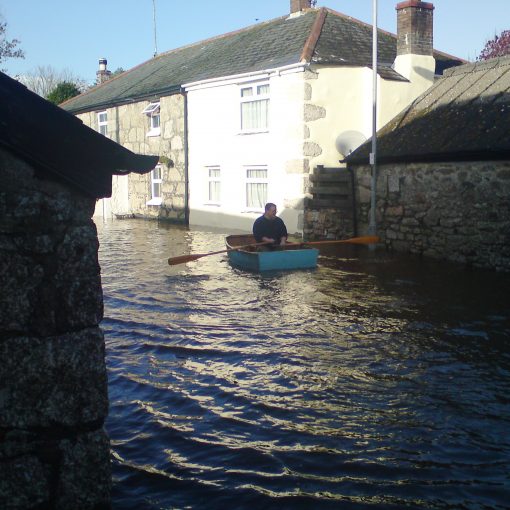16th February
Adding to last time, we have the birds and bees, a summary of Half Term events and more about those non-electric low carbon driving opportunities in Sweden.



I need to look back over past calendars to be sure, but I swear this has been the wettest school holiday since I returned to live in Cornwall, in 2017. Apart from the first weekend, the rain has been almost constant and we haven’t seen the sea for days on end. Our site is so water-logged it is impossible to walk around here and the paths in our neighbouring woodland have either turned completely into streams, or – on higher ground – the rotting leaves are like a skating rink and you can very quickly end up sitting on your bum in the mud. Small wonder therefore that our Valentine’s Day adventure had to be cancelled.
During that walk we had intended to share lots of fun activities and stories about animals in woodland habitats at this time of year. A few gems emerged from research, which I am sure children will love when we do eventually deliver this walk. How about these?
- Wild honeybees have been dozing during the winter months. They search out very old & probably sickly hollow trees, build the equivalent of a hive inside and take a little snooze.
- As the air temperature in the woods begins to warm up, they will gradually wake and realise they need to go out. Can you guess why?
- First, they need moisture, not necessarily in the stream or puddles. It is enough to sit on a nice patch of damp moss and drink from there.
- Second, they will pick up whatever pollen is available at this time. Catkins are a likely good source at the moment (see above) and
- Last but not least, they go for a poo! Apparently, they can keep filling up their equivalent of a Bee bowel, for most of the winter. But then the waste has to be got rid of! Our bee expert, Penny Forsyth explained, if you see lots of small brown specks when your washing has been drying on the line on a sunny day, that is very likely to be Bee Poo Too!


And one real bird sang to me – MP3

| Picture from last time – parakeets are spreading north |
Can any reader tell me what this was, ‘Singing in the Rain’?
Recouping on last week – UK birds and climate change
The top picture last time was of Canada geese. They were first introduced in Great Britain in the late 17th century as an addition to King James II’s waterfowl collection in St. James’s Park. By the middle of the 18th century, populations have become established in France, Great Britain and Ireland.
According to the British Trust for Ornithology, which studies birds in the British Isles, the number of wild birds in Britain has fallen by 73 million since 1970. Their Head of Ringing, Dr Dave Leech, said climate change was a growing pressure, particularly for migratory birds dealing with extreme weather on several continents.
He told BBC News: “Climate change is one of the biggest pressures that all species are facing, but particularly migratory species, because they have to worry about the climate conditions not only where they’re breeding, but also where they’re wintering and the areas that they’re travelling through to get here, which can be thousands of kilometres.”
For decades, thousands of skilled bird ringers and other volunteers have been collecting data on changes in British bird populations, shedding light on their decline. Peter has been ringing birds for many years in Gloucestershire. There “will be winners as a result of climate change and losers”, he said.
“Future generations might not hear a nightingale or see a cuckoo but there will be other things they see.
“A bee-eater might become a common species for example. And by collecting all this ringing data we can monitor what is going on and mitigate for the human- led climate change that is the major driver behind most of these changes.”
Parakeet problems – did you know?
As we see in Lyndon’s Northampton garden above, parakeets are gradually moving further north, from London into the Midlands.
The monk parakeet (Myiopsitta monachus) is native to parts of South America. From the 1990s onwards, after arriving into the UK, pet birds escaped and settled in the wild in London. Unfortunately, they have the inconvenient habit of building their communal nests on important infrastructure, including a mobile phone mast on the Isle of Dogs, London, where their numbers were greatest.
Concerned about reports from the USA, where the parakeets have damaged fruit crops and caused fires by nesting on electricity pylons, the Department for Environment, Food and Rural Affairs (Defra) took action. From 2011, monk parakeets were humanely captured and eggs and nests were removed. Eight years later, Defra reported fewer than 20 birds remaining in the wild and they expect them to be gone by 2022. They haven’t succeeded, have they? Do write in and let us know!
Summary of Half Term
It is hard to believe we could have such extreme opposites in one Half Term holiday. And I am not talking about the weather now. No, I refer to the outcomes – a first event, which was such a great success, compared with the second which encountered every problem in the book, especially in regard to Health and Safety …
Putting together an event at your own centre is one thing, as you know every inch and every intervention that can help. But when you are delivering for an outside organisation, it can become very tricky indeed. Last July we were booked and supported all the way to delivering a grand day of workshops at Kresen Kernow. There were no H & S issues.
In October it was a pure joy to create sessions that were delivered in a humble social club in Lostwithiel. This venue is run so smoothly, but not in any officious or high-handed manner. I am very, very grateful to have been given the chance to run activities there, without problems.
This time, with a good deal of encouragement and even some generous funding, we went to Truro. The big hall at Pydar may not be the plushest of places, lots of buckets and rain sploshes on the floor. Was it a health and safety hazard? Yes, but mitigated when I screened off all the puddles with audience chairs and went over the floor with a dry mop, to remove any final moisture.
The result was a very fitting, spacious and impressive venue for an equally impressive body of performers. Loved the Ribbon Dance piece they had created, loved the ways that they responded to being interviewed for ITV, loved also alerting them to the related issues of human rights and sharing news of climate innovations. Thank you so much to Jason Thomas and his students for lifting our event to a new level of quality!
Here are some pics

And links kindly provided by the TV reporter Charlotte Gay of ITV News West Country
ttps://www.facebook.com/share/PSnmGSEHCkXPkqsM/?mibextid=WC7FNe https://www.instagram.com/reel/C3NqchooxLu/?igsh=aHFyb3F4cG5sc2tp
There was not a great deal of time to mention climate in her film, but we successfully delivered 5 pledges, across the spectrum of culture, human rights and climate:-
PART 1 PLEDGE and CANDLE LIGHTING – 1 volunteer please
We pledge to continue helping people learn about the traditions of Chinese civilisation & how they link people around the world. We will approach this task with humility and respect.
PART 2 PLEDGE and CANDLE LIGHTING – 2nd and 3rd volunteers
We give thanks for the input of creative people, who keep performances alive and bring forward ideas to help solve problems of climate change. We pledge to continue supporting this movement for Climate Hope.
PART 3 PLEDGE and CANDLE LIGHTING – Volunteers please
We pledge to support local small shops and restaurants that bring us authentic ingredients and cuisine and we’ll take care to buy just the right amount, so we do not end up with a mountain of leftovers. But if we fail, we promise that the mountain will go into our food waste recycling!
PART 4 PLEDGE and CANDLE LIGHTING – Chrys McLaren (thank you dear reader!)
We haven’t mentioned too much about Human Rights here, but there are some serious issues of persecution for those who want to support Shen Yun in China. And a similar situation against ethnic minorities, such as the Moslem Uyghur people, who play a major role in making solar panels.
I know, by doing my own research and also reading what Caroline’s Green Friday blog shares with readers, that we all must take responsibility for what we buy from China. Let’s all make that pledge now!
PART FIVE – Introduced by voice from Judy’s husband, Graham, currently with a group in Krabi, Thailand
The final element to consider in our relationships with China is distance. Anything we buy has to travel thousands of miles and will generate quantities of CO2. That is the same pledge about shopping responsibly all over again. Let’s not forget it!

***************
Back to Health and Safety
Despite repeated efforts to create a walk that would be H & S compliant, we were not able to meet the requirements for Cornwall Council. I felt it was largely to do with poor paperwork! The forms for Pydar set out a comprehensive list of boxes to fill in but they were far more appropriate to a community organisation than the ones for our proposed walk. I concluded that the people who control Pydar Pop Up building really ‘get’ the way we work and the concept but the other department has no idea about e.g. Early Years best practice, risk taking, Forest School parameters and the like.
I think Pydar team will be pleased with the post-show feedback, such as from this Taiwanese parent on behalf of her very young child:-
My daughter is poorly ☹. So sorry. I have been looking forward to this for weeks, I hope we can make the afternoon at least.
Hope it goes really well, it sounds so well organised. Happy Chinese New Year, Year of the Dragon 🐉🐲
She came for the Ceremony in the afternoon: – Thank you so much for organising and inviting us, we had such a lovely time despite my little girl being ill. Please can you pass on our thanks to the lovely volunteers who helped us at the event?
I hope you’ll be organising again for next year, there are no Chinese New Year celebrations organised down here at all, so I was so excited to see yours.
Thank you again and Happy Chinese New Year! Wishing you all the best for Year of the Dragon 🐉🐲
New Car
Quote from the Cambridge Dictionary – putting your money where your mouth is! MEANS “to show by your actions and not just your words that you support or believe in something.”
I first started investigating HVO after I saw this giant green sign on a tractor last June.


Seven months later, I have chosen the car that I hope can have a similar impact and be used in a trial of the biofuel, HVO. I transferred the money by BACS yesterday and then realised I didn’t know how to go and collect it. Aha, I would have to use public transport. From here the options were i) a short walk to the 28 bus and ii) a much longer walk of about 45 minutes and catching 2 trains. At the moment there is a considerable amount of discussion happening locally about the safety of going to catch that bus, crossing a main road filled with very fast upcoming traffic on a hill. I decided – despite the rain – it would be more enjoyable to do the long walk and train ride. It was a good decision as the views from the train, without leaves on the trees, were much clearer than I have seen in the past.


The car I chose is a 2010 Citroen Picasso, but with a very low mileage for the year.
In the end I did not seek a vehicle that would be ULEZ compliant, for a number of reasons. Price was one, the Euro 6 cars are beyond the budget I wanted to use for this experiment. But a second reason was, when the dealer I chose told me that it could become more difficult to combine HVO with ‘AdBlue’, which is a required addition in Euro 6 cars. Until now I wasn’t aware of this product – AdBlue® is a colourless, non-toxic liquid that is a solution of water and urea. It works to convert nitrogen oxide emissions in the exhaust gas of diesel engines, into nitrogen and water. A particulate filter then further reduces solid particulates from the vehicle’s exhaust emissions.
Did you get that? Adblue is pee! Or even less ladylike, perhaps I can say … a piece o’ piss!! If we in the UK are required to use it in our ULEZ diesels, my next thought was to discover if it is also used in Scandinavia, where addition of a biofuel is legally required in all diesels. When I first discovered HVO, Sweden had already been observing this rule for 5 years; it is called
The Swedish Reduction Mandate
Please be warned this section is quite long-winded and technical! I have re-written much of it, not simply copied from the web source. Decided to keep it in for the motoring enthusiasts, but you may want to skip through.
Headlines
November 2023 Under current Swedish rules, diesel has to contain 30.5% biofuel and petrol 7.8%.
However, their new government voted in in the previous May has already dictated a change, which will kick in at the start of 2024. STOCKHOLM, May 8 (Reuters) – Sweden will struggle to hit its 2030 emissions targets, a government agency warned on Monday, after the country’s minority coalition cut the biofuel that must be added to diesel and gasoline.
The right-wing Sweden Democrats-backed coalition government has already cut fuel taxes, raised tax breaks for people driving to work and ended new electric vehicles subsidies.
Mixing in biofuels from renewable sources is a way to reduce emissions from cars, but the government said at the weekend it will cut the required amount of biofuel (in petrol) to 6% in 2024 and for it to remain at that level until the end of 2026.
FURTHER EXPLANATION – What is the Swedish reduction mandate?
The reduction mandate obliges fuel distributors to mix biofuel into petrol and diesel, to achieve a certain percentage reduction in their emissions. In 2023, the required reduction level was 7.8% for petrol and 30.5% for diesel. When calculating what emissions will be permitted under the mandate the life cycle emissions of the biofuel to be blended in are also included (that means including all emissions associated with production processes). Think of it as a good or bad ‘footprint’; fuels with low life cycle emissions (good footprint) are able to meet the requirements by mixing in a smaller amount of biofuel than those required for a bad fuel with a higher life cycle emission. If fuel distributors fail to meet the correct mandate, they must pay a penalty charge.
Why does Sweden have a reduction mandate?
Up until the mandate was introduced in 2018, Sweden had been lagging behind most other countries in the EU, where some form of blending legislation for biofuels had already been brought in. But there had been an interim stage before the reduction mandate was introduced – a different system of tax reduction for all biofuels. However, this reduction was counted as “state aid” according to EU regulations, and that meant there was always uncertainty as to whether Sweden would continue to be granted permission for the tax reduction. This was not acceptable to the government, whose leaders realised they needed to set up to a more stable long-term policy, which could support and reassure their fuel industry. They introduced the mandate for this reason.
As a result of the first stage tax reduction policy, Sweden already had reached the highest percentage of biofuel use in the transport sector in the EU e.g. before the 2018 reduction mandate was introduced. When the first reduction levels were set to 2.6% for petrol and 19.3% for diesel, they were deliberately chosen to be close to the levels of biofuel consumption already being achieved in Sweden at the time.
Is the Swedish reduction mandate high compared to other EU countries?
All EU countries have some form of blending mandate for biofuels today but they are designed in different ways, which makes them difficult to compare directly. In most countries, fuel distributors are required to blend a certain amount of biofuels into gasoline and diesel, either based on volume or energy content. Sweden, Germany, and from 2022 also Denmark, are the only countries that make use of a reduction mandate. In our research, my colleagues, Jonas Zetterholm and Olivia Cintas Sanchez and I have recalculated all blending mandates and reduction mandates within the EU into a common unit in order to be able to compare them. There we can see that Sweden’s reduction mandate has been the highest in the EU. This has enabled Sweden’s transport sector to reach by far the largest emission reductions of all EU countries. The mandate has also led to a higher consumption of so-called “advanced biofuels” in Sweden, compared to other countries, because such advanced biofuels have low carbon dioxide emissions, which are rewarded under the reduction mandate.
What will happen to the Swedish reduction mandate now?
On October 12th 2023, the Swedish government decided to put forward a bill to lower the reduction mandate to 6% starting in January 2024, and it was approved by the Swedish parliament on November 30th. That level will then apply for the rest of the political term (which ends in 2026). The hope is that lowering the reduction mandate will lead to lower fuel prices, especially for diesel. However, it also means that CO2 emissions from the Swedish transport sector will increase by 4.8–8.7 million tonnes per year, according to the government’s own calculations and the proposal has received criticism from several reference bodies.
Longer term implications for Swedish climate goals
In addition to the goal of achieving net zero emissions by 2045, Sweden has climate goals for 2030, which include a specific target for the transport sector. The road traffic sector accounts for about 30% of Sweden’s greenhouse gas emissions today, and the target is that by 2030 emissions in the sector should be 70% lower than in 2010. Most researchers and experts agree that, in the long term, electrification will be the main driver for emission reductions in road transport. Despite that, the Swedish Energy Agency, the Swedish Transport Agency and the Swedish Environmental Protection Agency have all stated that even with a high rate of electrification, a significant use of biofuels is needed if Sweden is to reach the climate target for 2030. The Swedish Energy Agency, that has been tasked with evaluating the reduction mandate have suggested a gradual increase of the reduction levels until they reach 75% for diesel and 14% for gasoline by 2030 in order to meet the climate target.
The high need for biofuels by 2030 stems from the fact that not enough cars will be electric by then. Today, pure electric cars make up about 5% of the passenger car fleet in Sweden. Even if only electric cars were sold in Sweden, starting today (the real share of electric cars in new car sales in 2022 was 30%), only about half of the vehicle fleet would be electrified by 2030. For freight traffic, the proportion of electric vehicles is even lower, and the development there can both take longer time and require other technologies. Therefore, solutions are needed to reduce emissions for the remaining gasoline and diesel-powered vehicles that will be on the roads in 2030.
What about biofuel production in Sweden?


Approximately 5.2 TWh of liquid biofuels and 2.3 TWh of biogas were produced in Sweden in 2022. At the same time, approx. 25 TWh of biofuels were consumed. This means that a large part of the biofuels used in Sweden are imported. 🙁 In our research, we see that even though a country encourages consumption of biofuels, through a blending or reduction mandate, it does not mean that production capacity automatically is built in the country.
It is likely that the demand for biofuels will increase in the EU in the coming years, as climate ambitions are raised. However, singling out the road transport sector, demand for biofuels is predicted to decrease after 2030 in many countries, as the share of electric vehicles increases. Our research shows this is something that biofuel producers are well aware of. When they invest in new biofuel production capacity it is often with the long-term intention of being able to convert the plant to production of, for example, bio-jet for aviation or bioproducts for the chemical sector. In this way, short-term demand may lay the foundation for investments in other sectors, where electrification may not be an option.
(The report above is based on research funded by the Swedish Energy Agency and f3-Swedish Centre for Renewable Transport Fuels (Project number: 50479-1) and by the Swedish Research Council FORMAS (Project number: 2020-00184_Formas).
https://etipbioenergy.eu/images/EBTP_Factsheet_Sweden.pdf)
Next time I will focus more on developments of Hydrogen and its role in achieving low emissions motoring in the next few years in the UK. But concluding for today, here again is the un-answered ADBLUE question (no I didn’t forget it!). Looks like Adblue IS required for Euro6 cars running on biofuels in Scandinavian countries. But I would be fearful that adjustments would be required to accommodate it in Citroen VN10 RZR (Very Nice 10 Really Zippy Rover!!) and have already been advised that such a modification would prevent me getting insurance cover here.





